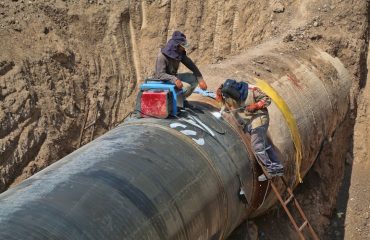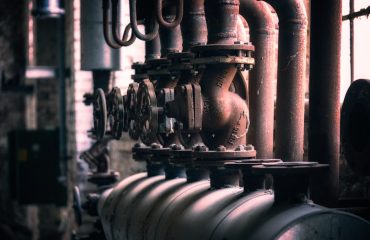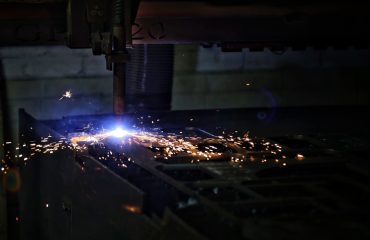The safe and efficient transportation of natural gas relies heavily on the integrity of the pipeline network. Corrosion, both internal and external, is a significant threat to this infrastructure, leading to leaks, explosions, and environmental damage. To mitigate these risks, pipeline operators utilize various protective coatings, with epoxy (EP), polypropylene (PP), and polyethylene (PE) coatings standing out as prominent solutions. This article delves into the specifics of these coatings, their applications, and their crucial role in ensuring the long-term reliability of gas pipelines.
Understanding the Three Coating Types: EP, PP, and PE
Each coating type offers unique properties and benefits, making them suitable for different pipeline applications and environments. Let’s break down the characteristics of each:
- Epoxy (EP) Coatings: Epoxy coatings are known for their excellent adhesion, chemical resistance, and mechanical strength. They provide a robust barrier against corrosion and abrasion, making them ideal for pipelines operating in harsh environments or those subjected to significant mechanical stress. The application process often involves a multi-layer system to maximize protection. However, epoxy coatings can be more susceptible to damage from UV radiation, limiting their suitability for above-ground applications without additional UV-resistant topcoats.
- Polypropylene (PP) Coatings: PP coatings offer excellent chemical resistance, particularly to acids and alkalis. They are also known for their high impact resistance and flexibility, making them suitable for pipelines that experience vibrations or bending. PP coatings are often applied as a fusion-bonded epoxy (FBE) system, where the PP layer is fused to the pipe surface, ensuring a strong bond and excellent protection.
- Polyethylene (PE) Coatings: PE coatings, typically high-density polyethylene (HDPE), are renowned for their exceptional flexibility, abrasion resistance, and excellent resistance to a wide range of chemicals. They are often applied as a three-layer system including a fusion bond epoxy primer for optimal adhesion. Their flexibility makes them particularly well-suited for pipelines in areas prone to seismic activity or ground movement. PE coatings are also commonly used in the external coating of pipelines, providing substantial protection against soil corrosion.
Application Methods and Considerations
The application process for each coating type varies slightly, but generally involves meticulous surface preparation of the pipe to ensure optimal adhesion. This often includes cleaning, degreasing, and potentially blasting the pipe surface to create a rough profile for better bonding. The coating is then applied using specialized equipment, often in a controlled environment to maintain consistent thickness and quality. Factors to consider during application include:
- Environmental conditions: Temperature and humidity can significantly impact the curing process of the coating.
- Pipe diameter and length: Larger diameter pipes may require more complex application methods.
- Coating thickness: The required thickness depends on the specific application and environmental conditions.
- Quality control: Regular inspection and testing are essential to ensure the coating meets the required specifications.
Advantages of Using EP/PP/PE Coated Pipes in Gas Pipelines
The use of EP, PP, and PE coated pipes offers numerous advantages, leading to improved pipeline safety, longevity, and efficiency:
- Enhanced Corrosion Protection: The primary benefit is the significant reduction in corrosion rates, extending the lifespan of the pipeline.
- Improved Safety: Reduced corrosion risk minimizes the chances of leaks and explosions, improving overall pipeline safety.
- Reduced Maintenance Costs: Extended pipeline lifespan and reduced corrosion translate to lower maintenance and repair costs.
- Environmental Protection: Preventing leaks helps protect the environment from gas emissions and soil contamination.
- Increased Efficiency: A well-protected pipeline operates more efficiently, reducing downtime and maximizing gas flow.
Choosing the Right Coating for Your Gas Pipeline Project
Selecting the appropriate coating depends on several factors, including the pipeline’s location, operating conditions, soil characteristics, and budget considerations. A thorough risk assessment and careful consideration of the advantages and disadvantages of each coating type are crucial. Consulting with experienced pipeline engineers and coating specialists is recommended to ensure the optimal solution for a specific project.
For instance, pipelines buried in highly corrosive soils might benefit from a thicker EP or FBE coating, while pipelines in areas prone to ground movement might be best served by the flexibility of PE coating. Above-ground applications might necessitate UV-resistant topcoats in conjunction with the primary coating.
Regulations and Standards for Coated Gas Pipelines
The use of coated pipes in gas pipelines is governed by stringent regulations and industry standards to ensure safety and quality. These regulations often specify minimum coating thicknesses, application methods, and testing procedures. Compliance with these standards is crucial for obtaining permits and ensuring the long-term integrity of the pipeline system. Specific standards vary depending on geographical location and regulatory bodies but generally align with international best practices.
In conclusion, the use of EP, PP, and PE coated pipes plays a vital role in safeguarding gas pipelines, ensuring their longevity, and minimizing environmental risks. By carefully considering the specific application requirements and adhering to relevant standards, pipeline operators can leverage the benefits of these protective coatings to maintain a safe and efficient gas transportation network.
SEO Tags: EP coated pipes, PP coated pipes, PE coated pipes, gas pipeline coating, pipeline corrosion protection




